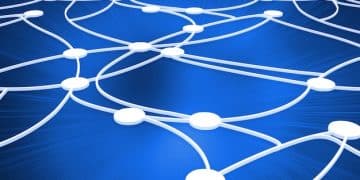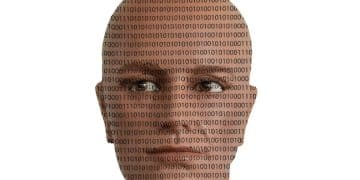Citizen Science: How Tech Empowers US Communities to Solve Problems

Citizen science leverages technology to engage US communities in scientific research, fostering collaborative problem-solving and driving innovation across various fields.
The rise of citizen science is transforming the way research is conducted and problems are solved in the United States. By harnessing the power of technology, communities are becoming active participants in scientific endeavors, driving innovation and addressing local challenges with newfound efficiency.
The Evolution of Citizen Science in the US
Citizen science has a rich history, evolving from simple observations to sophisticated data collection efforts. In the US, this evolution has been fueled by technological advancements, making it easier than ever for individuals to contribute to scientific knowledge and address pressing issues within their communities.
The concept of citizen science isn’t new; historically, it involved enthusiasts and hobbyists collaborating with professional scientists. However, the advent of the internet and mobile technology has democratized access to scientific tools and information, enabling a broader range of participants.
Early Forms of Citizen Science
Before the digital age, citizen science initiatives often relied on manual data collection and physical collaboration. Birdwatching, for example, has long been a popular activity where enthusiasts contribute valuable data on bird populations and migration patterns.
The Technological Revolution
The internet and mobile devices have revolutionized citizen science by providing platforms for data collection, analysis, and communication. This has led to an explosion of projects and opportunities for citizen involvement.
- Mobile apps allow participants to collect data in real-time using smartphones and tablets.
- Online platforms facilitate data sharing, collaboration, and project management.
- Data visualization tools help researchers and citizens alike to understand complex information.
The technological revolution has not only expanded the scope of citizen science but also enhanced the quality and reliability of the data collected. Participants can now receive training, access resources, and collaborate with experts through online platforms, ensuring that their contributions are valuable and accurate.
In conclusion, the evolution of citizen science in the US reflects the ongoing democratization of knowledge and the increasing accessibility of technology. As more communities embrace citizen science, they are contributing to a more informed and engaged society, capable of addressing complex challenges with innovation and collaboration.

Technology’s Role in Citizen Science Projects
Technology serves as the backbone of modern citizen science projects, enabling widespread participation and efficient data management. From data collection apps to online collaboration platforms, technology empowers citizens to contribute meaningfully to scientific research.
The integration of technology into citizen science has transformed the way data is collected, analyzed, and shared. This has led to a surge in the number and scale of citizen science projects, addressing issues ranging from environmental monitoring to public health.
Data Collection Apps
Mobile apps have become indispensable tools for citizen scientists, allowing them to collect data in the field with ease. These apps often include features such as GPS tracking, image capture, and real-time data submission.
Online Collaboration Platforms
Online platforms provide a virtual space for citizen scientists to collaborate, share information, and access resources. These platforms facilitate communication, project management, and data analysis.
- Online forums and chat rooms allow participants to discuss project-related topics and share insights.
- Data visualization tools help users to explore and interpret data in a user-friendly format.
- Educational resources provide training and guidance for citizen scientists.
Moreover, machine learning and artificial intelligence (AI) are being used to analyze large datasets collected by citizen scientists. This can help identify patterns, trends, and anomalies that might otherwise go unnoticed.
To sum up, technology is an essential ingredient in the success of citizen science projects. It empowers communities to take an active role in scientific research, providing them with the tools and resources they need to make a meaningful contribution.
Environmental Monitoring: Communities Protecting Their Ecosystems
Citizen science plays a crucial role in environmental monitoring, empowering communities to protect their local ecosystems. By collecting data on air and water quality, biodiversity, and climate change, citizen scientists provide valuable insights that can inform conservation efforts.
Environmental challenges often require localized solutions, and citizen science provides a means for communities to understand and address these issues. From monitoring pollution levels to tracking invasive species, citizen scientists are on the front lines of environmental protection.
Air Quality Monitoring
Citizen scientists can use handheld devices and mobile apps to measure air pollutants and assess air quality in their communities. This data can be used to identify pollution sources, track trends, and advocate for cleaner air.

Water Quality Monitoring
Citizen scientists can collect water samples, measure water parameters, and identify sources of pollution. This data can be used to assess the health of waterways and guide restoration efforts.
- Training programs provide citizen scientists with the skills and knowledge they need to collect accurate and reliable data.
- Collaboration with local organizations and government agencies ensures that data is used to inform decision-making.
- Public awareness campaigns help to educate the community about environmental issues and encourage participation in citizen science.
Citizen science not only provides valuable data but also empowers communities to take ownership of their environment. By engaging in monitoring activities, citizens become more aware of environmental issues and more invested in finding solutions.
In closing, citizen science is an essential tool for environmental monitoring and conservation. It provides a means for communities to protect their ecosystems and promote a more sustainable future.
Public Health Initiatives: Citizen Science for a Healthier Nation
Citizen science is increasingly being used in public health initiatives, enabling communities to address health disparities and improve health outcomes. By collecting data on disease prevalence, health behaviors, and environmental risk factors, citizen scientists contribute to a more comprehensive understanding of public health issues.
Public health challenges often require community-based solutions, and citizen science provides a way for communities to take an active role in promoting health and well-being. From tracking disease outbreaks to promoting healthy lifestyles, citizen scientists are making a difference in public health.
Disease Surveillance
Citizen scientists can use mobile apps and online platforms to report symptoms, track disease outbreaks, and monitor the spread of infectious diseases. This data can be used to inform public health interventions and prevent the spread of disease.
Health Behavior Research
Citizen scientists can participate in studies that examine health behaviors, such as diet, exercise, and smoking. This data can be used to develop interventions that promote healthy lifestyles and prevent chronic diseases.
- Community-based participatory research (CBPR) is a collaborative approach that involves researchers and community members in all aspects of the research process.
- Data visualization tools help users to identify patterns and trends in health data.
- Public health campaigns promote awareness of health issues and encourage participation in citizen science.
Citizen science empowers communities to take control of their health and well-being. By engaging in research activities, citizens become more knowledgeable about health issues and more invested in finding solutions.
In summary, citizen science is a valuable tool for public health initiatives. It provides a means for communities to address health disparities, improve health outcomes, and promote a healthier nation.
Educational Opportunities: Engaging Students in Real-World Science
Citizen science offers unique educational opportunities for students of all ages, engaging them in real-world science and fostering a deeper understanding of scientific concepts. By participating in citizen science projects, students develop critical thinking skills, learn about data analysis, and contribute to scientific knowledge.
Education is a vital component of citizen science, ensuring that future generations are equipped with the knowledge and skills they need to address complex challenges. From classroom activities to field experiences, citizen science provides a hands-on approach to learning.
Integrating Citizen Science into the Classroom
Teachers can integrate citizen science projects into their curriculum, using them as a springboard for exploring scientific concepts. This approach allows students to apply their knowledge in a real-world context and see the relevance of science to their daily lives.
Field Experiences and Outdoor Learning
Citizen science provides opportunities for students to engage in outdoor learning, collecting data in natural environments and connecting with the natural world. These experiences can foster a sense of environmental stewardship and inspire future scientists.
- Mentorship programs pair students with experienced scientists, providing guidance and support for their research projects.
- Online resources provide teachers and students with access to lesson plans, data sets, and educational materials.
- Science fairs and competitions showcase student work and celebrate their contributions to citizen science.
Citizen science not only enhances students’ scientific literacy but also empowers them to become active participants in their communities. By engaging in meaningful research, students develop a sense of purpose and a desire to make a difference.
In short, citizen science is a powerful tool for education, engaging students in real-world science and fostering a deeper understanding of scientific concepts.
Overcoming Challenges and Ensuring Data Quality in Citizen Science
While citizen science offers numerous benefits, it’s essential to address potential challenges and ensure data quality. Issues such as data accuracy, participant bias, and project sustainability can impact the reliability and impact of citizen science projects. Addressing these challenges requires careful planning, training, and ongoing monitoring.
For citizen science to be truly effective, it’s crucial to establish robust quality control measures and promote ethical practices. By doing so, we can maximize the value of citizen contributions and ensure that research findings are credible and meaningful.
Addressing Data Accuracy
Data accuracy is a primary concern in citizen science projects. To mitigate this, researchers can provide clear instructions, offer thorough training, and implement quality control checks.
Mitigating Participant Bias
Participant bias can also affect data quality. To reduce bias, researchers can strive for diverse participant pools, use standardized protocols, and implement analytical techniques that account for potential biases.
- Standardized data collection protocols ensure that all participants follow the same procedures, reducing variability and improving data consistency.
- Incentives and recognition can motivate participants to remain engaged and contribute high-quality data.
- Data validation techniques, such as cross-checking data from multiple sources, can help identify and correct errors.
In addition, fostering partnerships between researchers and community organizations can help build trust and ensure that projects are aligned with community needs and values. This can lead to greater participation and more sustainable outcomes.
In conclusion, addressing challenges and ensuring data quality are critical for the success of citizen science projects. By implementing appropriate measures, we can maximize the value of citizen contributions and promote a more informed and engaged society.
| Key Point | Brief Description |
|---|---|
| 🌱 Environmental Monitoring | Citizens collect data to protect ecosystems. |
| 🩺 Public Health | Communities address health disparities. |
| 📚 Educational Opportunities | Students engage in real-world science. |
| 📊 Data Quality | Ensuring accuracy in citizen science. |
Frequently Asked Questions
Citizen science is the involvement of the public in scientific research, often through data collection, analysis, or project design. It allows anyone to contribute to scientific knowledge.
You can find citizen science projects through online platforms like SciStarter or Zooniverse. These platforms list projects based on your interests and location.
Citizen scientists collect a wide range of data, including weather observations, wildlife sightings, water quality measurements, and health-related information.
Yes, when proper protocols and training are in place. Researchers use various techniques to validate and ensure the accuracy of data collected by citizen scientists.
Citizen science benefits communities by engaging them in science, improving scientific literacy, and providing valuable data for research and decision-making.
Conclusion
In conclusion, the rise of citizen science powered by technology is revolutionizing how US communities address complex problems. From environmental monitoring to public health initiatives, citizen science empowers individuals to contribute meaningfully to scientific research, fostering collaboration, innovation, and a more informed society.





